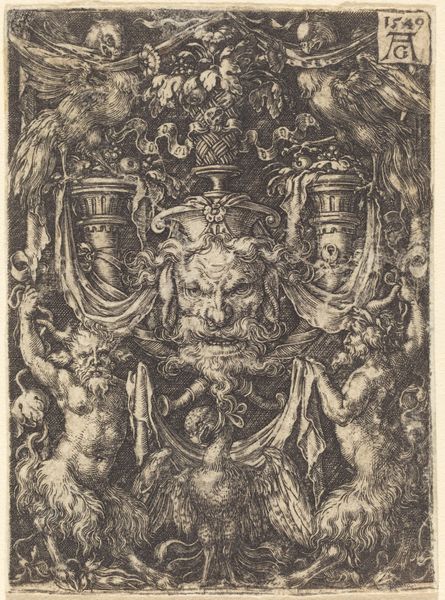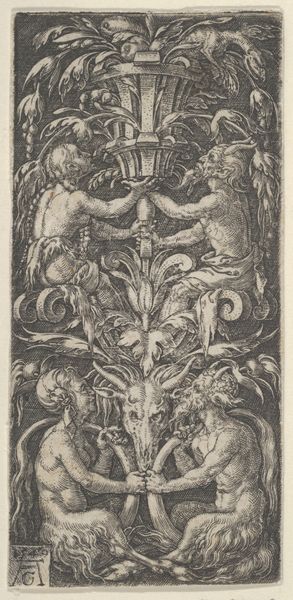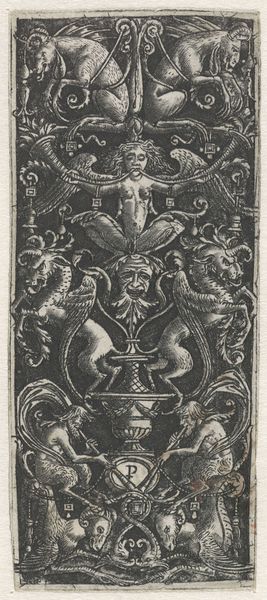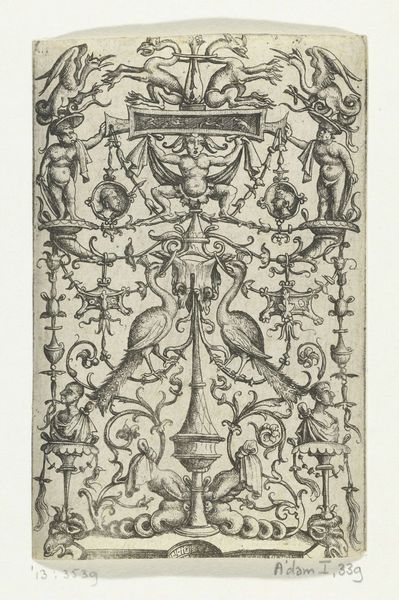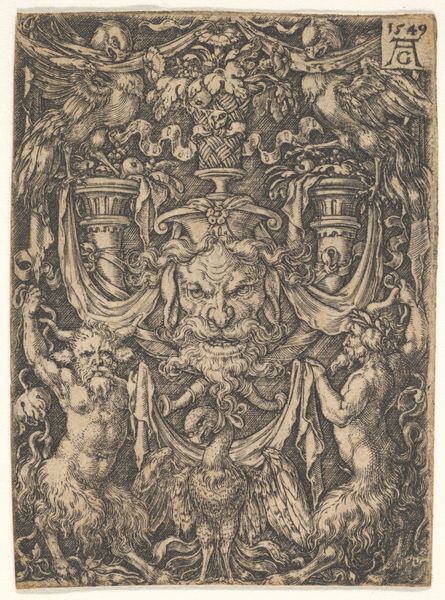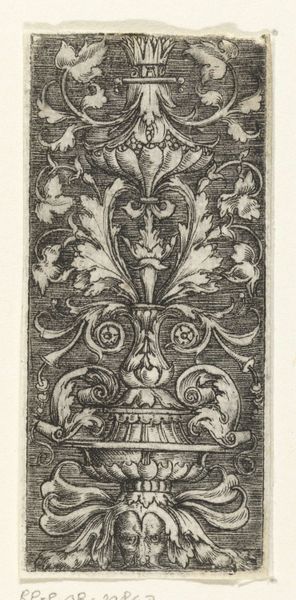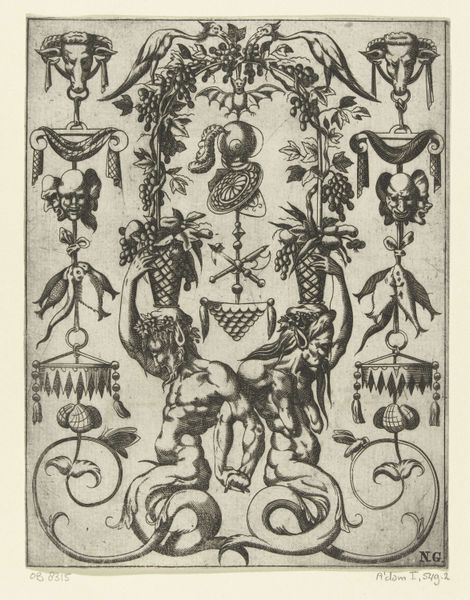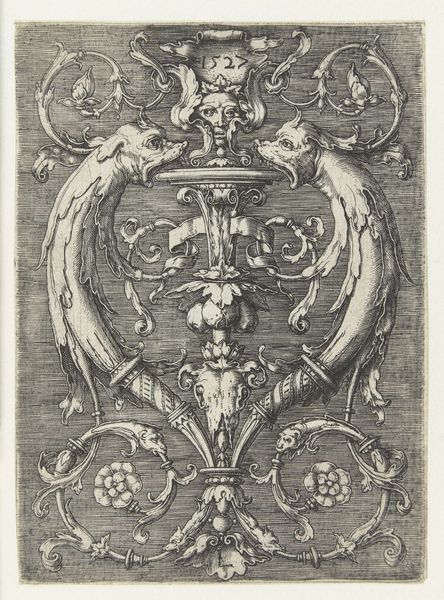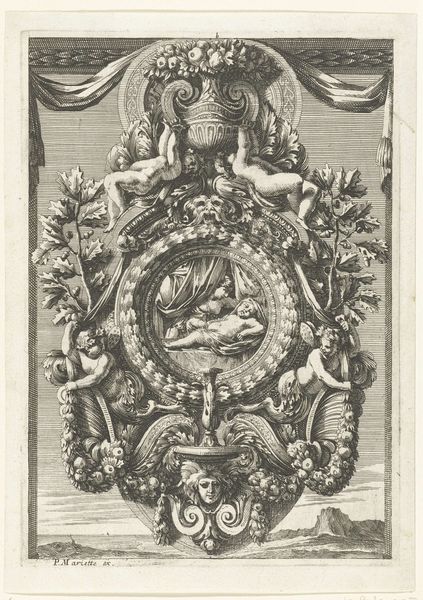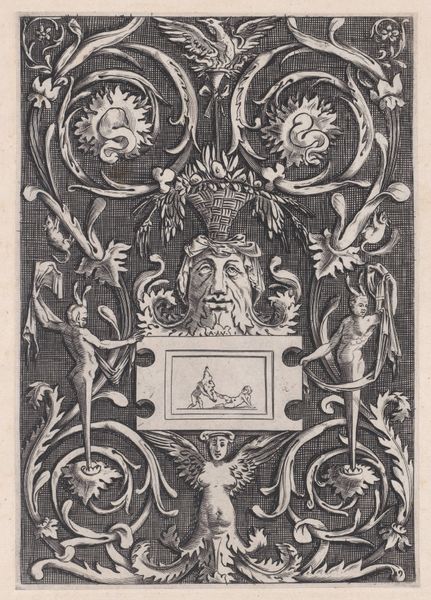
print, engraving
# print
#
fantasy-art
#
mannerism
#
figuration
#
northern-renaissance
#
engraving
Dimensions: height 66 mm, width 49 mm
Copyright: Rijks Museum: Open Domain
This tiny engraving, made by Heinrich Aldegrever in the 16th century, shows us the fashion for grotesque ornament in the Northern Renaissance. This fashion, which took its name from the decoration of ancient Roman ruins, emerged in Italy and soon spread throughout Europe. It combined human and animal forms with fantastical architectural motifs and was intended to be playful. But here, in Northern Europe, the grotesque took on a different tone. This example includes a satyr and a strange draped figure, as well as a fearsome bearded face. The print is not lighthearted, but rather dark and brooding. Aldegrever worked in Germany during the Reformation, which changed the artistic landscape by questioning the role of religious imagery. To understand the grotesque, we need to look at the social and religious context in which it was made. The collections of the Rijksmuseum and other historical archives can help us to explore this further.
Comments
No comments
Be the first to comment and join the conversation on the ultimate creative platform.
